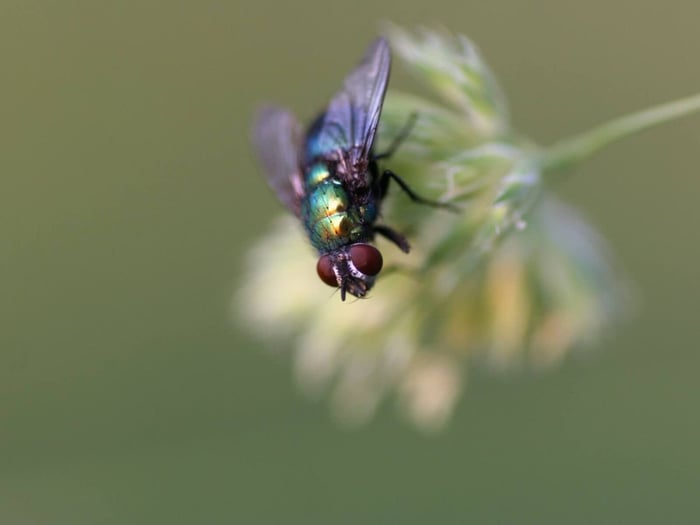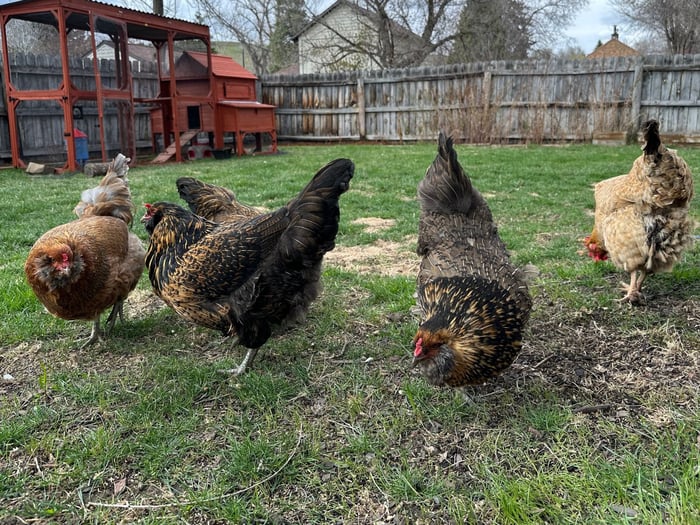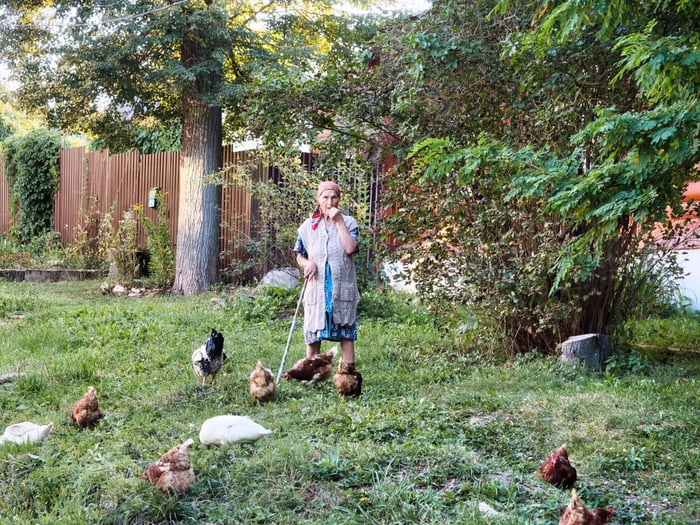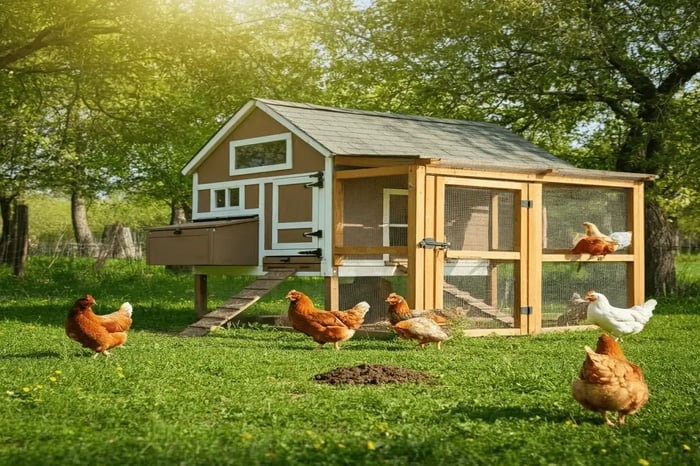Table of Contents
A Backyard Chicken Keeper’s Guide to Fly Control
Fly season can challenge even the most seasoned backyard chicken keeper. Whether you’re raising a small suburban flock or running a bustling homestead, fly control quickly becomes a top priority as temperatures rise.
Flies are more than just a nuisance. They’re drawn to the manure, damp bedding, and leftover feed that naturally accumulate in chicken coops, and they multiply fast. Without proper fly control, you may soon find your coop swarming with buzzing pests that annoy your hens, spread disease, and make your daily chores miserable.
The good news? With the right fly control strategies, you can take charge of the situation, keep your chickens healthy, and even turn flies into a valuable resource. Let’s break down everything you need to know to stay ahead of fly season.
Why Fly Control Is Critical for Chicken Keepers
Effective fly control is not just about comfort — it’s about flock health and sanitation. Flies thrive in warm, moist environments, and backyard chicken coops offer everything they love: manure, spilled water, damp bedding, and scattered food.
Here’s why fly control should be on your priority list:
Disease Prevention: Flies can carry harmful bacteria like salmonella and E. coli, which they spread from manure to waterers, feeders, and eggs.
Reducing Stress: Chickens are easily annoyed by persistent flies, especially around their eyes, combs, and vents. This constant irritation can lead to stress, feather pecking, or decreased egg laying.
Improving Coop Cleanliness: Excessive fly populations often indicate underlying coop hygiene issues. Tackling flies usually means improving the overall environment, which benefits both you and your flock.
If you let flies get ahead of you, it’s much harder to catch up. That’s why fly control is most effective when you combine prevention, trapping, and good cleaning habits.
Best DIY Fly Traps for Backyard Chicken Coops
Fly traps are a simple, effective tool that don’t need to spend much money. Here are two of our favorite DIY methods chicken keepers swear by.
Plastic Bottle Fly Trap
This trap uses materials you probably already have in your recycling bin and can capture dozens of flies at a time.
What you need:
A clean, empty 2-liter soda bottle
Water, sugar, and a splash of vinegar
How to make it:
Cut the top third off the soda bottle.
Fill the bottom portion with water, a few tablespoons of sugar, and a splash of vinegar (the vinegar helps keep bees away).
Invert the top part (so it forms a funnel) and place it into the base. Tape the two parts together securely.
Set the trap outside the coop, near areas where flies congregate but away from your chickens’ main living space.
Flies are attracted to the sugary scent, crawl into the funnel, and can’t find their way back out. This non-toxic option is perfect for chicken keepers who want a safe, homemade solution.
Apple Cider Vinegar Fly Bowl
Apple cider vinegar (ACV) is a homestead favorite and works beautifully for fly control.
How to set it up:
Pour about half a cup of raw, unfiltered ACV into a shallow dish or bowl.
Add a few drops of dish soap (this reduces surface tension, causing the flies to sink).
Leave the dish uncovered near problem areas where flies tend to gather.
Flies will be attracted to the smell, land on the surface, and sink into the solution. It’s simple, cheap, and chemical-free.
Commercial Fly Traps and Sticky Strips
If DIY isn’t your style, plenty of ready-made products are available for fly control around the coop.
Commercial fly bags, which use non-toxic baits, can catch hundreds or even thousands of flies over several weeks. Sticky fly strips can be hung near windows, doors, or outdoor coop areas to trap flies without chemicals.
Look for products labeled safe for use around livestock or poultry to ensure you’re not introducing harmful toxins into your chickens’ environment.
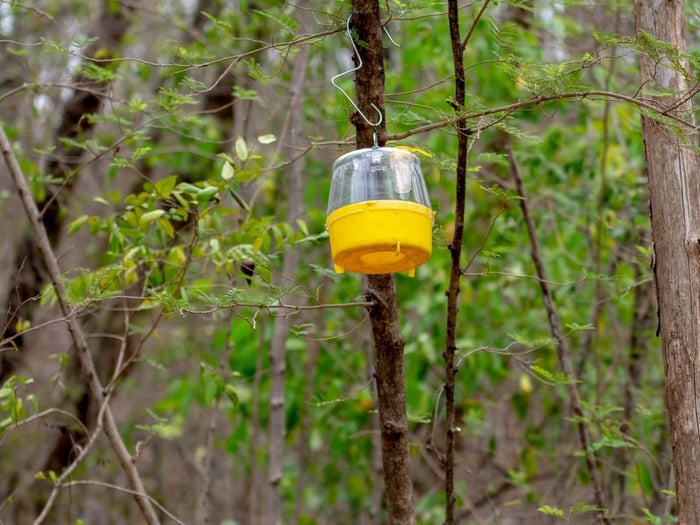
Prevention: The Heart of Effective Fly Control
While traps are useful, the foundation of long-term bug control is prevention. Reducing the conditions that attract flies in the first place will drastically lower the fly population around your coop.
Key prevention strategies:
Manure Management: Clean poop trays and remove droppings from the coop at least once a week, or twice a week during hot, humid weather when flies are most active.
Dry Bedding: Flies are drawn to damp organic material. Replace any wet or soiled bedding promptly, especially after rain or spilled water.
Food and Scrap Control: Only offer your chickens the amount of feed and kitchen scraps they can finish. Leftover scraps quickly attract flies, so remove anything uneaten at the end of the day.
Water Management: Check for leaks in waterers or any areas where puddles collect. Keeping the run dry is essential for good fly control.
Proper Waste Disposal: Compost chicken manure properly, away from the coop, to avoid drawing flies right to your flock’s doorstep.
By focusing on these prevention measures, you’ll reduce the need for heavy trapping and chemical treatments — and you’ll make your overall chicken-keeping experience much more pleasant.
Feeding Flies to Chickens: From Pest to Protein
Here’s an unexpected bonus of fly control: you can turn those caught flies into a high-protein treat for your chickens.
Chickens are natural foragers and insect hunters, and they love snacking on bugs. If you’re using non-toxic traps like the plastic bottle or ACV dish, you can scoop out the dead flies and offer them to your flock as a nutritious snack.
How to safely feed flies to your chickens:
Only collect flies from traps that use no pesticides, poisons, or chemical attractants.
Offer the flies soon after collecting them — don’t let them rot or become moldy.
Scatter them in the chicken run or mix them with other treats for added enrichment.
Feeding flies back to your chickens is not only a satisfying way to close the loop on your efforts, but it also gives your birds an extra boost of protein, especially during molting or high-egg-laying periods.
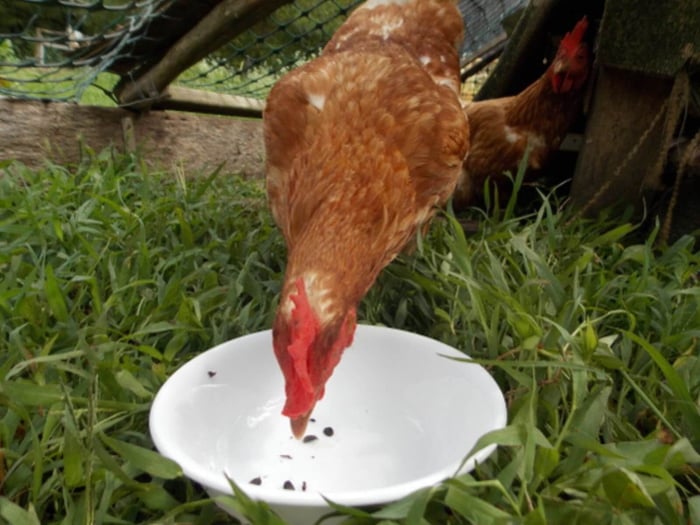
Final Thoughts
Flies may never be a glamorous part of keeping chickens, but it’s one of the most important. By combining effective traps, consistent coop maintenance, and smart prevention strategies, you can dramatically reduce fly populations, protect your chickens’ health, and make your time in the yard much more enjoyable.
Whether you prefer DIY methods or commercial products, the key to successful deterring flies is starting early and staying consistent. With a little effort and attention, you can keep your coop buzzing with happy hens — not buzzing with flies.


.png)
